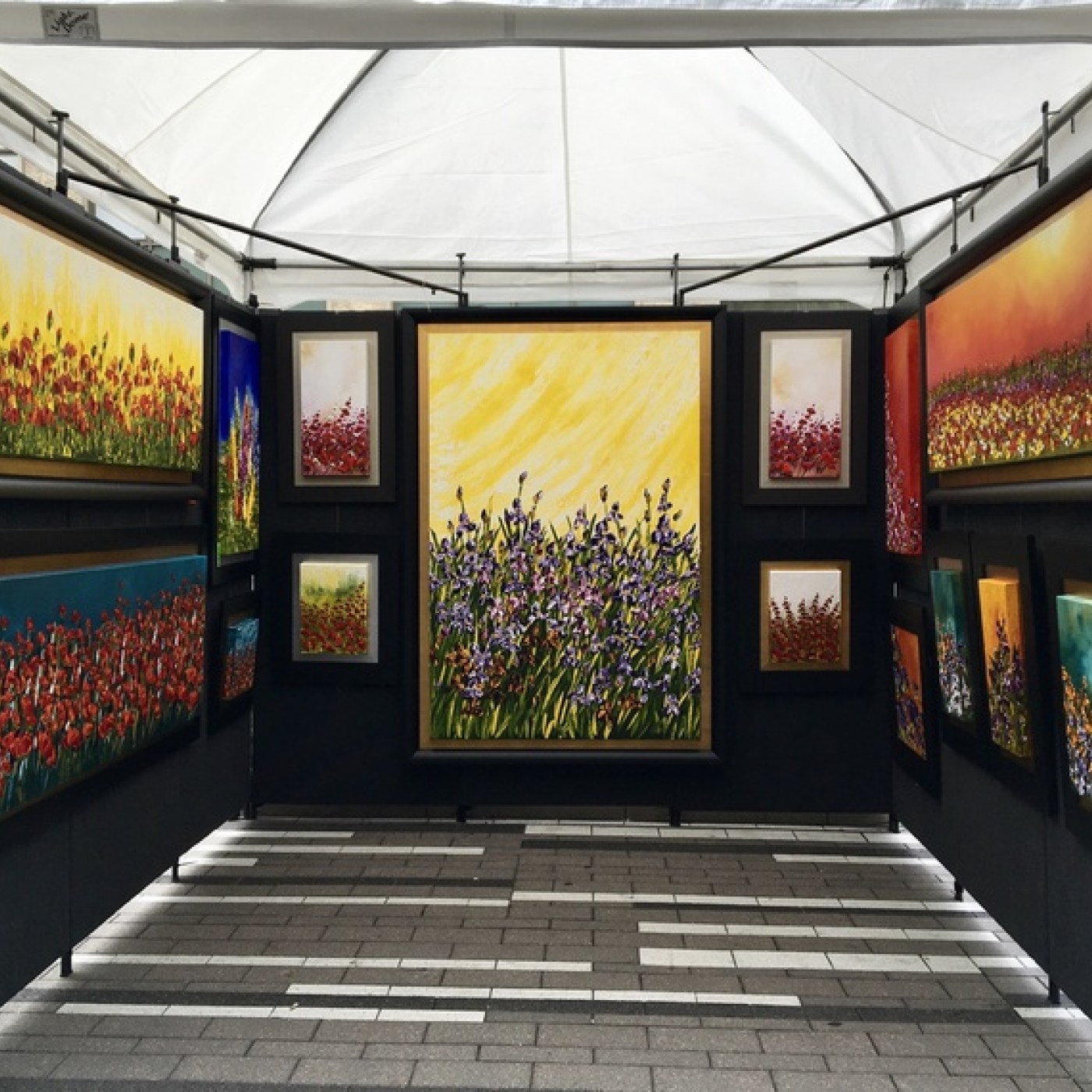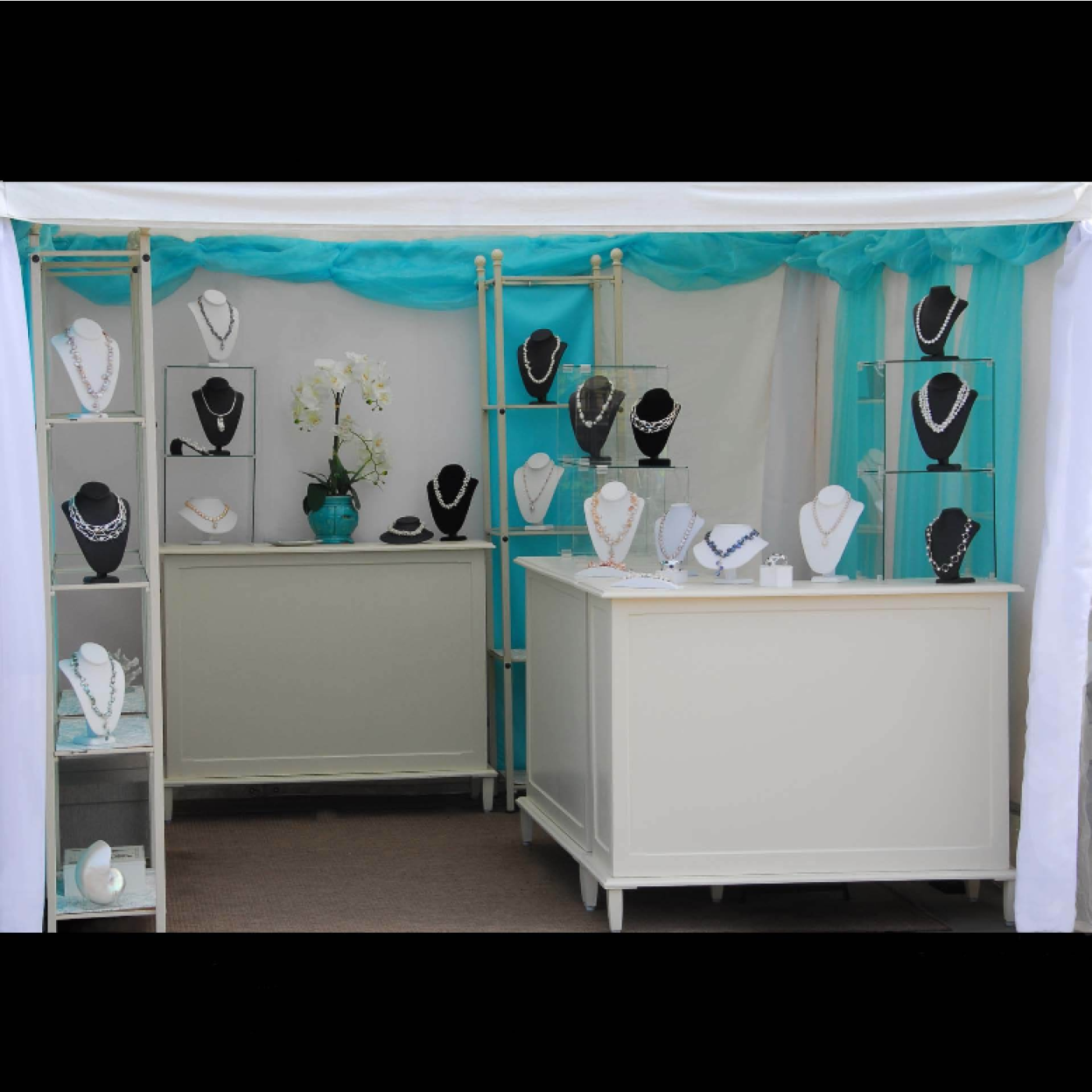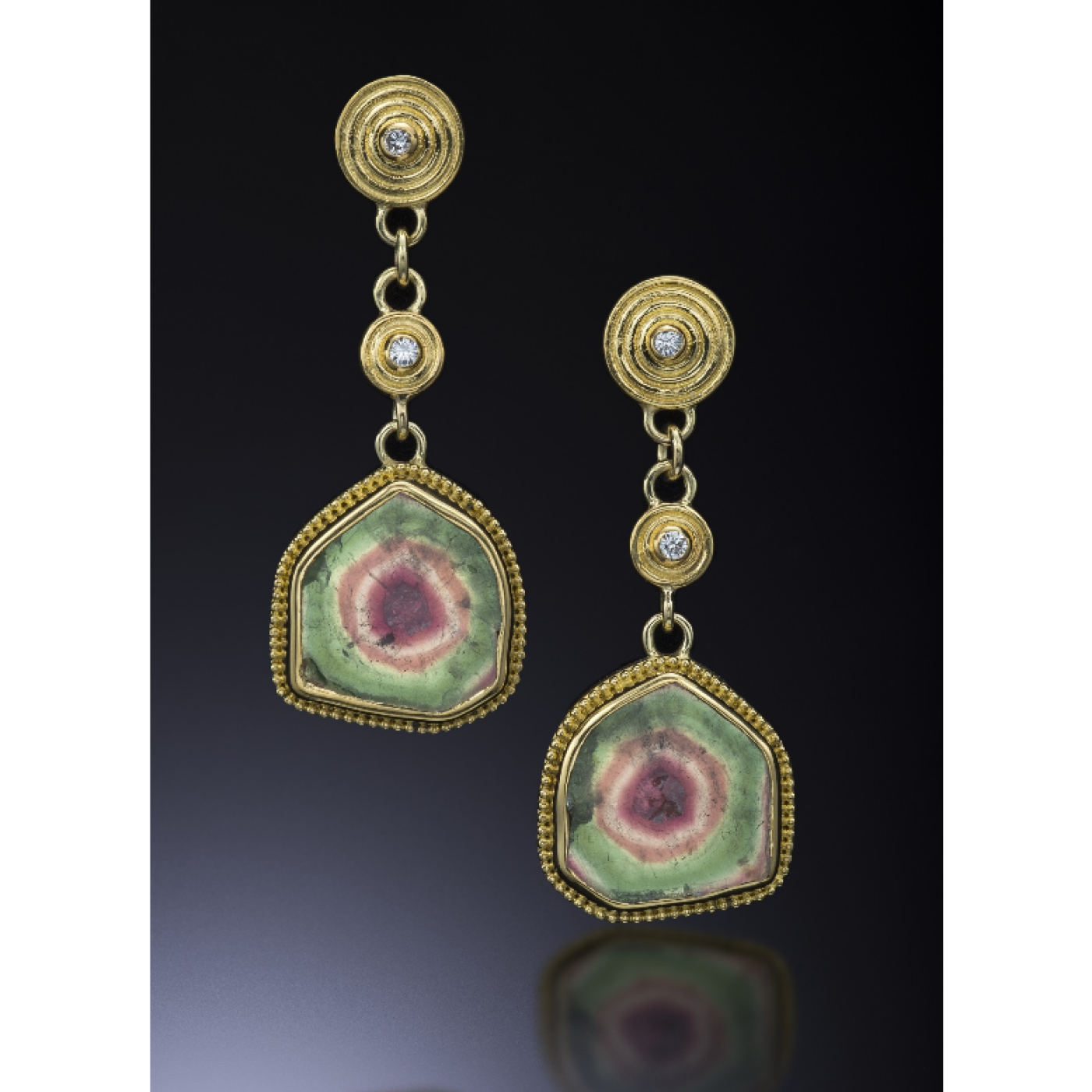Make Your Application Stand Out Promoter Shares Her Advice
After 39 years and having seen thousands of jury images, I’m passing tips on to artists related to jurying for shows.
A common mistake, especially for newer artists, is showing different types of art in the four jury images. An example of this is one abstract landscape, one realistic portrait, one mixed media collage, and one pencil sketch. While the four diverse images may serve as an overview of the artist’s creative path, the diversity hurts them in jury when jurors are scoring work based upon a body of work.
A “body of work” refers to how well the four images hold together by theme, material, and technique. A tight body of work always scores higher than a loose group of images.
Artists should select four images that relate to one another in theme, material, and technique. This selection of criteria applies to all categories of art. Also, select four images where the art is about the same size, and if a background shows, make sure the background is consistent in all images. Pro Tip: Simple gradient backgrounds ensure the art stands out.

Missing Booth Shots
When a booth shot is required for jury, artists who do not submit one lose points. In Amdur Productions’ juries, a booth shot is required.
If an artist sends in an extra work image instead of a booth shot, or no booth shot image, the artist receives a “0” for “booth.” This “0” score can make the difference between getting into a show and being rejected from a show.
Artists new to shows may not have a booth shot yet. In that case, there are a few options. One solution is to set up a tent in one’s backyard or outdoor space complete with hung or displayed work.
Another option is to set up a mock-up in one’s home; where two walls come together, hang work or — in the case of jewelry — set up tables and cases. Pro Tip: With 2D art, center a large piece on your back center wall to grab the attention of those walking by your booth. “Hot spots” in your booth are also the front right and front left positions, as they are seen first by those walking by your space.

Bad Booth Shots
Having a bad booth shot can lose an artist points. Common problems are messy booths, work hung unevenly, too much work hung, too little work hung, work hung too high or too low, dark booths, distracting elements like street markings, work presented haphazardly like jewelry on tabletops, and frail, temporary-looking tents like those one might use at a backyard BBQ.
Colored tents also can be problematic because they change the color perception of work in your booth. Tablecloths from your dining room and area rugs do not cut it either.
Use your booth shot to show jurors the scale and finish of your work. During a show, photograph your booth so your work is clearly visible.
Hang 2D work on a carpeted panel wall system. Use invisible vertical and horizontal midlines to create an ordered dynamic display for 2D work.
Jewelers: Use cases or original cabinets that are higher than a standard table. Jewelers can consider accenting their booths with sheer fabric drapes or cascading fabric and photo blowups of their work.
Invest in fitted, matching tablecloths that go to the ground and area rugs that are one color and stretch from wall to wall. Pro Tip: Show a cohesive body of work, with similar frame styles for 2D, similar stands for jewelry, and matching pedestals for 3D.
Stand Out From Others
To make your application stand out, present a body of your work with very high-quality images that show the work with good exposure and in perfect focus. Use work with bright colors when possible.
Include a great booth shot. Keep your artist statement shorter with information about your technique and art. Answer all questions such as title and size for the jurors to refer to. Utilize a free jury review, which we offer, and take our free webinars to learn tips and tricks from jury to selling.

